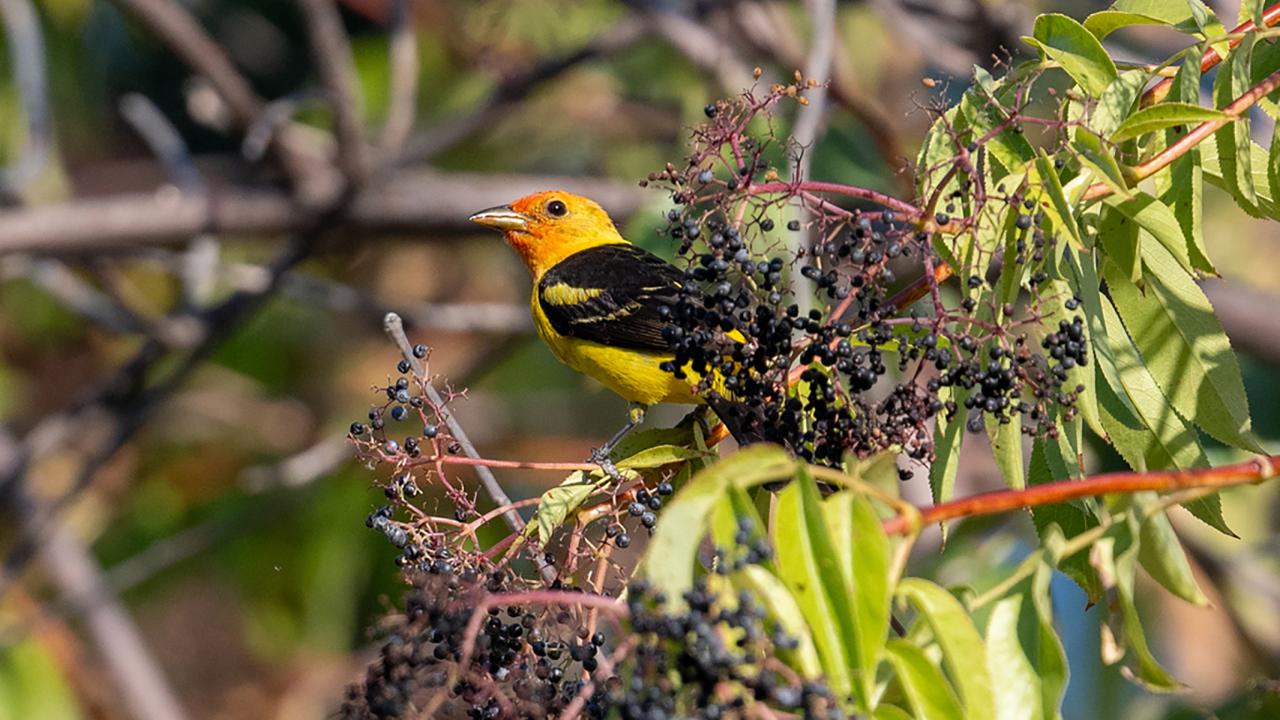
Can Citizen Science be Trusted? New Study of Birds Shows it Can
Platforms such as iNaturalist and eBird encourage people to observe and document nature, but how accurate is the ecological data that they collect?
In a new study published in Citizen Science: Theory and Practice on March 28, UC Davis researchers show that citizen science data from iNaturalist and eBird can reliably capture known seasonal patterns of bird migration in Northern California and Nevada — from year-round residents such as California Scrub-Jays, to transient migrants such as the Western Tanager and Pectoral Sandpiper.
“This project shows that data from participatory science projects with different goals, observers, and structure can be combined into reliable and robust datasets to address broad scientific questions,” said senior author Laci Gerhart, associate professor of teaching in the Department of Evolution and Ecology. “Contributors to multiple, smaller projects can help make real discoveries about bigger issues.”

Wild Davis research
The study began as a student capstone project in Gerhart’s Wild Davis field course, which teaches students about urban ecology and California ecosystems. First author Cody Carroll, who is now an assistant professor at the University of San Francisco (USF), took the course in 2020 while completing his Ph.D. in Statistics at UC Davis.
Most Wild Davis capstone projects are focused on community service at the Stebbins Cold Canyon Nature Reserve, but students were restricted to computer-based projects during the COVID-19 shutdown, so Carroll decided to use his statistical expertise to analyze data from iNaturalist.
After Carroll graduated and began working at USF, the team regrouped and took the project a step further by combining the iNaturalist data with data from eBird, a different citizen science platform that is usually used by bird enthusiasts with significant birding experience.
Merging iNaturalist and eBird
Since iNaturalist and eBird differ substantially in the type of data that they collect, and the type of user they appeal to, the team wanted to investigate whether their data could be integrated.
“eBird is more geared towards trained and very active birders who are doing complete record keeping of the birds that they're seeing in particular areas,” said Gerhart. “iNaturalist is intentionally geared towards more casual observers who are there as much to learn about the organisms as they are to document them scientifically.”
To merge the data, Carroll considered the relative frequency of observations rather than the overall number of observations, and also took into account the cyclic, seasonal nature of bird migrations.
Overall, the researchers compared data for 254 different bird species that were observed in Northern California and Nevada in 2019 and 2022. They found that the two platforms showed similar seasonal patterns for over 97% of bird species.

An assortment of seasonal bird patterns
To “ground truth” their findings, Gerhart and Carroll teamed up with Rob Furrow, an assistant professor of teaching in the Department of Wildlife, Fish and Conservation Biology, who is an avid bird watcher and eBird user.
“We wanted to test whether we were seeing actual migratory patterns or whether these were just due to biases in the observations, so we reached out to Rob, who is an expert about birds,” said Gerhart.
With Furrow’s expertise, the team showed that the combined iNaturalist and eBird data recapitulated a variety of known bird seasonality patterns within the region — meaning that the patterns were representative of actual bird presence, not due to biases in the observations.
For example, the team’s data showed that California Scrub-Jays are present in the region year-round, whereas Bufflehead ducks arrive in mid-fall and depart in early spring, and Western Tanagers pass through in late spring when they journey north to breed, and again in late summer as they fly southwards for winter.
“We were really pleasantly surprised that we could still get reliable data, despite the differences between eBird and iNaturalist,” said Furrow. “Even when you're relying on casual hobbyists who are taking photos of what they like, when they like, you're still getting a reliable representation of the birds in that area at that time.”
The power of publicly generated data
The study shows that, in addition to inspiring people to connect with nature, platforms such as iNaturalist and eBird can help answer important biological questions.
“This is a good example of why interdisciplinarity is important — we each brought different knowledge to this project, and it pushed each of us intellectually,” said Gerhart. “It was a really fun experience for us to combine our skill sets, and I hope that Cody, Rob, and I have a chance to work together again.”
To give back to the people who helped collect the data they used, the team made a point to publish their results in an open access journal. Carroll also created a dashboard, in collaboration with a student at USF, that allows people explore and visualize the seasonality patterns for all 254 bird species.
“It’s important for scientists who are relying on publicly generated data to make sure that their results are also publicly available,” said Gerhart.

Media Resources
- Liana Wait is a freelance science writer based in Philadelphia. She has a Ph.D. in ecology and evolutionary biology and specializes in writing about the life sciences.
